The partridge pigeon is endemic to parts of Australia and is a medium-sized ground-dwelling species.
It is known by other names such as the bare-eyes bronzewing, the bare-eyes partridge bronzewing and the bare-eyed partridge pigeon. In local languages, it is known as Rakul.
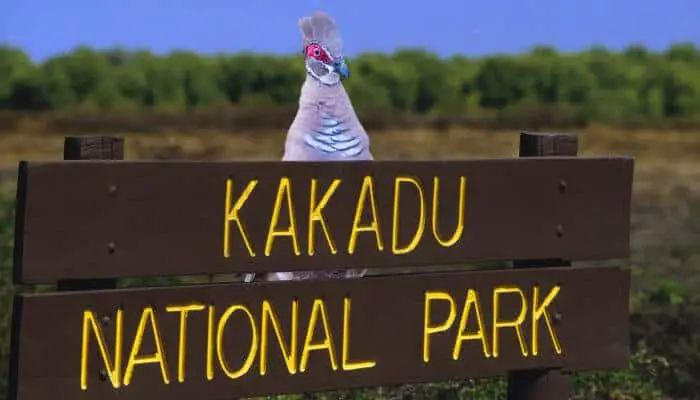
Origins of the Partridge Pigeon
The Partridge pigeon is endemic to and restricted to Australia (other than captive specimens in zoos).
Its origin is purely natural with no intervention by human breeding and it developed along similar lines of other birds in the Columbidae family in Australia.
Closest Relatives of the Partridge Pigeon
The partridge pigeon belongs to the genus Geophaps and is a subspecies of bronzewing pigeons. Although there are other birds in this subspecies, it is most closely related to the following birds:
- Squatter Pigeon
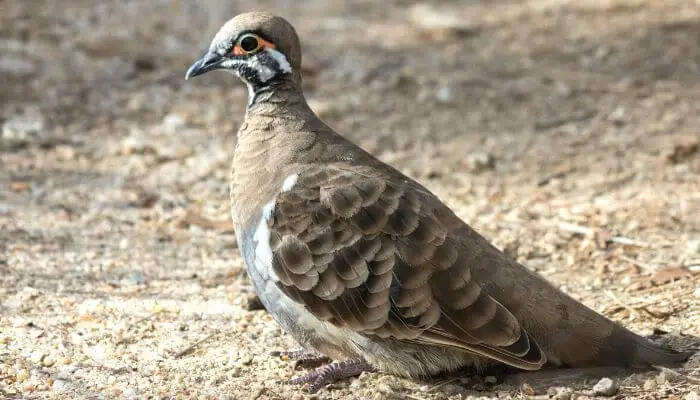
Endemic to northeastern Australia and identifiable by distinctive black and white facial markings and a single white stripe along both sides.
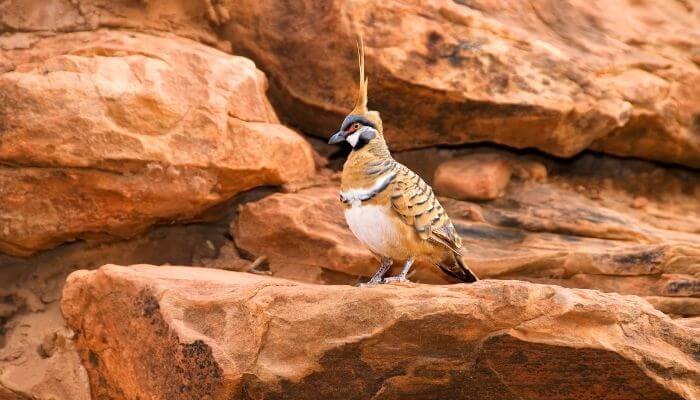
A small, compact species of pigeon found across much of the arid and semiarid regions of northern and central Australia.
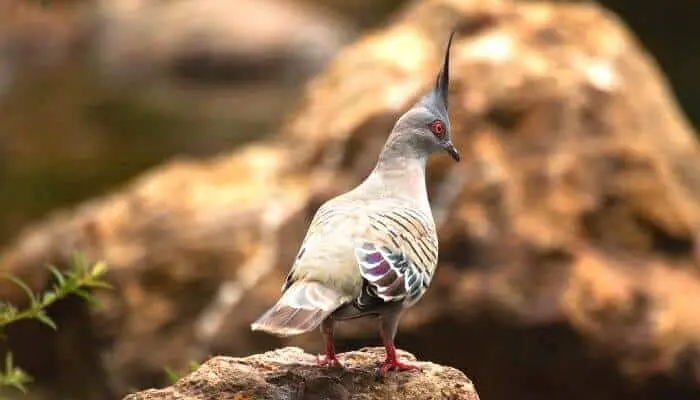
A species that can be found widely throughout all of mainland Australia, with the exception of the far north where the climate is too tropical for these birds to truly thrive.
Distribution And Habitat of the Partridge Pigeon
The partridge pigeon is generally only found in parts of what is known as the Top End of Australia.
The most concentrated populations are in Kakadu National Park.
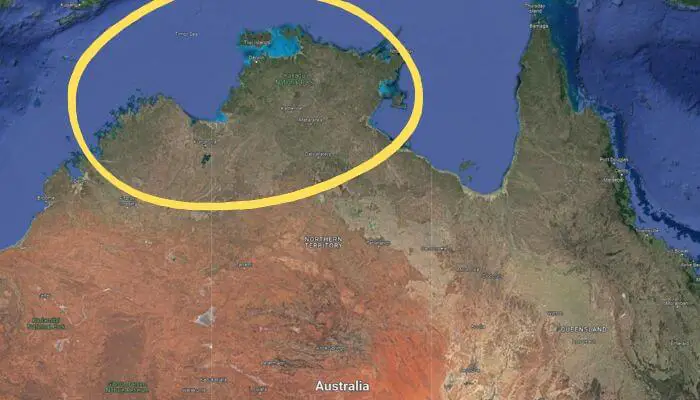
The natural habitat of the partridge pigeon is subtropical or tropical dry shrubland, or alternatively both subtropical and tropical dry lowland and grassland.
As a species, they do not tend to be prolific or effective fliers. They tend to spend most of their time on the ground and can often be seen crossing roads in urban areas.
Status of the Partridge Pigeon
In official conservation terms, the partridge pigeon is currently listed as being of least concern on the IUCN Red List.
The population, identified as 115,000+ in December 2021, is decreasing at a steady rate, and the main cause of this downturn is due to the ever-increasing threat and reality of habitat loss.
Growing urbanization of once wild green areas is leading to the partridge pigeon not having the space to thrive that it once had.
The reality of this is shown by the fact that the population thrives in the Tiwi Islands where urbanization does not threaten the partridge pigeon unlike other areas in its range.
Another threat to its range and distribution is the change in fire regimes in Australia – the method by which the actuality and threat of bushfires is managed.
Not only do fire regimes destroy the preferred habitat but it increases predation of the partridge pigeon by feral cats which are known to be attracted to burnt areas.
On the upside, the recent introduction of cane toads and their spreading distribution is helping to keep down the number of monitor lizards and snakes, some of the main predators of partridge pigeons.
Australia itself has classed its partridge pigeon as vulnerable and its population, particularly in protected areas, is monitored.
Appearance of the Partridge Pigeon
| Wingspan | Length | Weight | Coloring | |
|---|---|---|---|---|
| Partridge Pigeon | 48 – 52 cm | 25 – 28 cm | 150 – 250 g | Brown with white breast stripe |
| Average Feral Pigeon | 64 – 72 cm | 32 – 37 cm | 300 – 500 g | Bluish grey with some black |
The partridge pigeon has a plain brown plumage that is highlighted by a white stripe that runs along the edge of its breast.
The species has some distinctive facial markings that, interestingly, will vary depending on where in Australia it is based.
Partridge pigeons in the Northern Territory have red facial skin, whilst others that live in Western Australia will have yellow facial skin.
The Character Of The Partridge Pigeon
When it comes to fight versus flight, the partridge pigeon seems to be stuck in the middle!
Their desire to forage in clear patches on the ground makes them an easy target for predators such as feral cats, and because they rarely fly, when they do find themselves in a dangerous situation they tend to freeze up before frantically trying to get away.
When it does choose to make brief appearances in the air, it takes flight with a very loud and busy clatter of its wings!
As a species, they are mostly sedentary but will make short seasonal-driven migrations for food and water.
They are typically seen as singles or in small groups but in the late dry season, larger flocks may form around water sources.
The birds communicate using quiet murmuring contact calls, a low-pitched ooooa-oo.
Diet of the Partridge Pigeon
The partridge pigeon is a herbivorous species of bird, and their diet consists of various seeds, mostly of grasses but also Acacia and other woody plants that grow across the Top End of Australia.
Partridge Pigeon Mating And Breeding
Partridge pigeons can breed year-round, but mostly through the dry season which runs between March and October.
Peak breeding time is May and June.
They build their flimsy nests on the ground in areas of very dense grass to protect them from potential predators
A clutch is usually two eggs.
Taking Care of the Partridge Pigeon
Like for any of our beautiful wild creatures, the best thing that we as a bird-loving community can do for them indirectly is to care for the natural habitat that helps them to thrive where they can.
